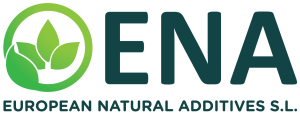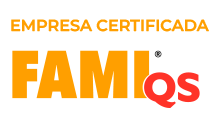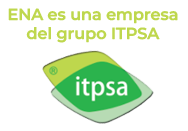By the technical team of
European Natural Additives, S. L.
Dysbiosis is defined as a change in the composition of the intestinal microbiota resulting in an imbalance between beneficial and harmful bacteria (Ducatelle et al., 2014). The ban on the use of antibiotics as growth promoters (APCs) in animal production within the EU (1 January 2006) led to an increase in digestive pathologies associated with intestinal dysbiosis.
Since then, the search for alternatives to APCs became a fundamental objective for producers in order to recover competitiveness and alleviate their negative economic consequences (occurrence of diarrhea and loss of growth).
In this sense, a multi-diana strategy may be the optimal way to deal with this intestinal pathology. Among the most used alternatives in swine production, one of them has been zinc oxide(ZnO), with good results at a productive level, but with a serious environmental problem due to the contamination of aquifers. For this reason, the EU prohibits its use as of 2022, and it is no longer a valid alternative.
Target
The objective of this work was to evaluate the efficacy of a commercial product based on a combination of phytogenic extracts with antimicrobial function together with organic acids and galactomannans with prebiotic and intestinal barrier enhancing effect, as a multiday alternative to the use of ZnO against an experimental infection with Gram-negative bacteria.
Material & Methods
An experimental trial was conducted with 40 21-day-old weaned piglets at the Institut de Recerca i Tecnologia Agroalimentàries (IRTA, Tarragona, Spain).
Six piglets were housed in three blocks (two piglets per block) and divided into three groups:
- Positive control (C+, 6 replicates): feed without medication.
- Treatment 1: (T1, 6 replicates): ZnO3 kg/t, for 4 weeks.
- Treatment 2: ENAGUT® (ENA, Spain) 6kg/t, for 4 weeks.
At day 5 post-weaning, experimental infection was performed in the 3 groups by inoculating the piglets with 5×10 8 CFU of Enterotoxigenic Escherichia coli k 88 (ETEC).

Results
Live Weight (BW).

Average Daily Gain.

Conclusions
The inclusion of ENAGUT® (6 kg/t) in the transition feed in piglets influenced the following parameters:
- Live weight (BW) at the end of the trial period (4 weeks post-weaning), similar to that obtained in the group treated with ZnO and surpassing the result of the infected group (C+).
- Average daily gain (ADG), much higher in the second part of the trial (3rd and 4th week post-weaning) compared to the positive control group and T1.
Under the conditions of high E. coli ETEC infection pressure in this trial, the ENAGUT® group achieved improvements in piglet performance parameters, especially in the second part of the trial (3rd and 4th week post-weaning). Since feed intake increases over the duration of the fattening period, it is expected that these improvements will be maintained as the animals increase feed intake with ENAGUT®.
Thus, we can conclude that ENAGUT® proved to be a good alternative to the use of zinc oxide (ZnO) in the post-weaning stage.







